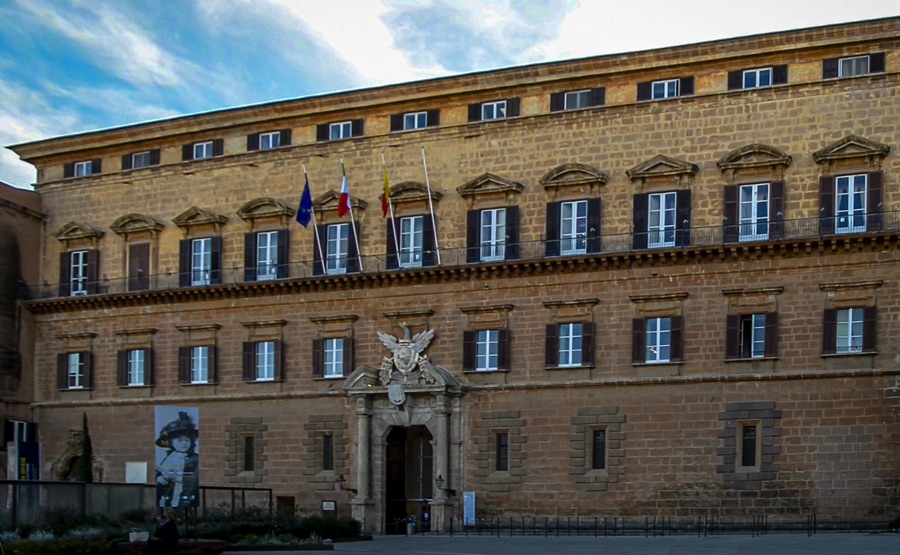Roger II dedicated himself to enlarging the emir’s former palace to make it his own palace. For this reason, in the external architectural layout of the Palace, one can see the various layers of both Islamic and Romanesque styles. The new king worked mainly on the middle floor of the building, where he had his personal chapel built after his coronation in 1130, dedicated to
St. Peter
.
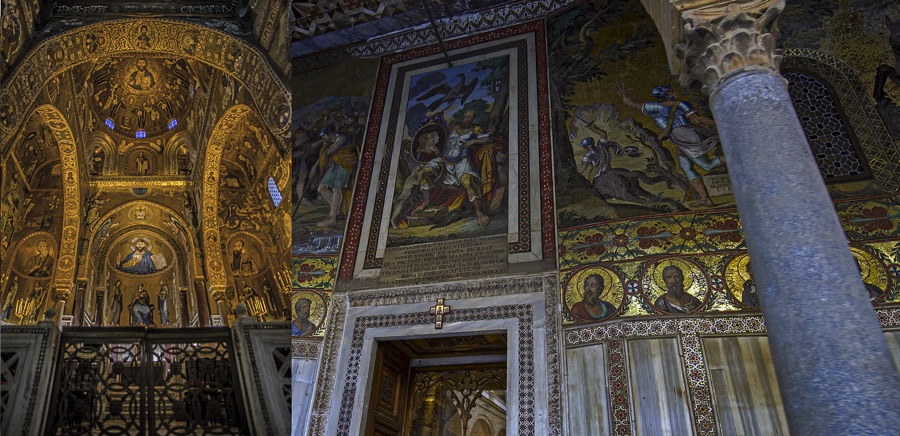 He also had the Greek Tower built, which was later remodelled during the Renaissance, and the Pisan Tower, where treasures were kept. The Joharia tower was decorated during the reign of the two Williams, with mosaics by Byzantine craftsmen depicting hunting scenes with lions, deer, centaurs, peacocks, various animals facing each other and stylised plant motifs.
He also had the Greek Tower built, which was later remodelled during the Renaissance, and the Pisan Tower, where treasures were kept. The Joharia tower was decorated during the reign of the two Williams, with mosaics by Byzantine craftsmen depicting hunting scenes with lions, deer, centaurs, peacocks, various animals facing each other and stylised plant motifs.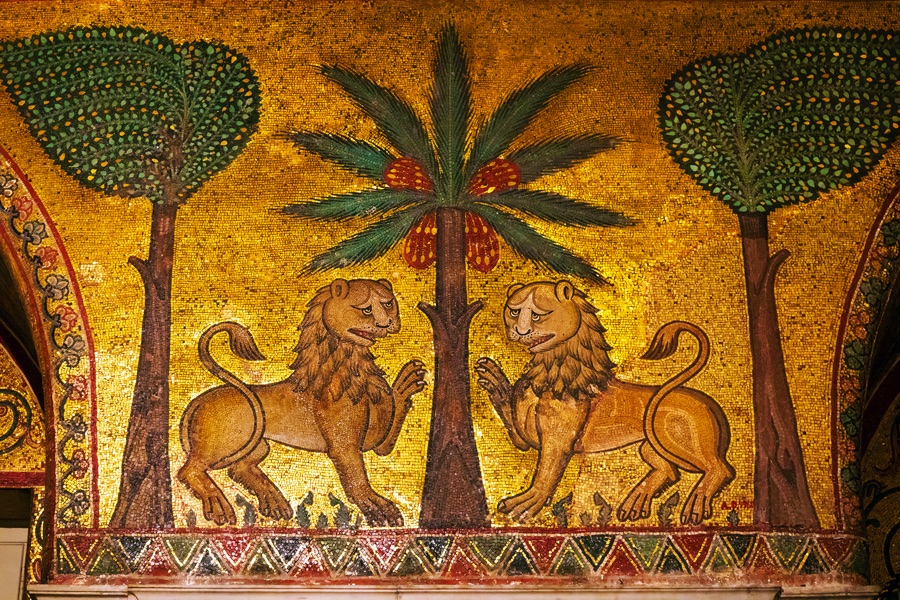 The exquisitely worldly mosaic cycle seems to echo the magnificent garden of the
Genoard
The exquisitely worldly mosaic cycle seems to echo the magnificent garden of the
Genoard
.
The Genoard was one of the most important and extensive parks in the period of William II. It extended from the city of Palermo, eastwards in the valley of the
Oreto river
, and southwards, where it bordered on the
Altofonte
.
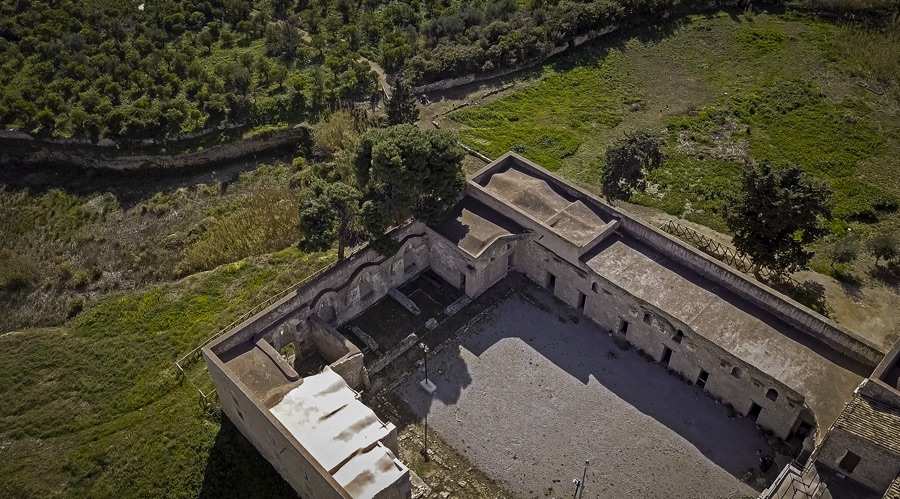 The name derives from the Arabic Jannat al-ard, meaning Garden or Paradise of the Earth, and occupied the whole western part of the fertile plain of Palermo, which in modern times would be called the
Conca d'Oro
The name derives from the Arabic Jannat al-ard, meaning Garden or Paradise of the Earth, and occupied the whole western part of the fertile plain of Palermo, which in modern times would be called the
Conca d'Oro
. Inside the Genoard, there were orchards, citrus groves, fountains, springs, water reservoirs and also residences, palaces and pavilions such as the
Cuba
,
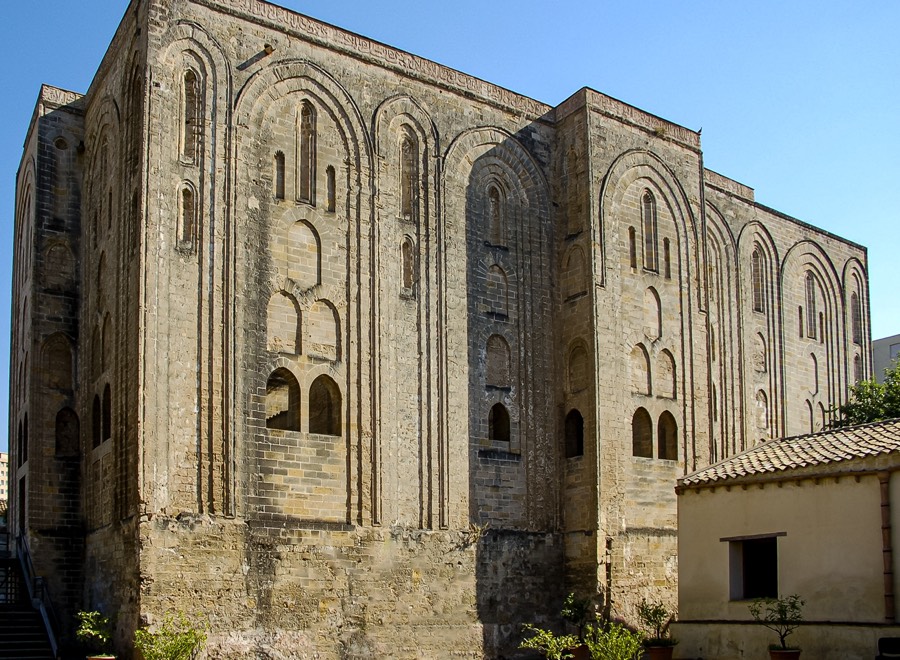 the Zisa
the Zisa
, the
Cuba Soprana
, the
Cubula
,
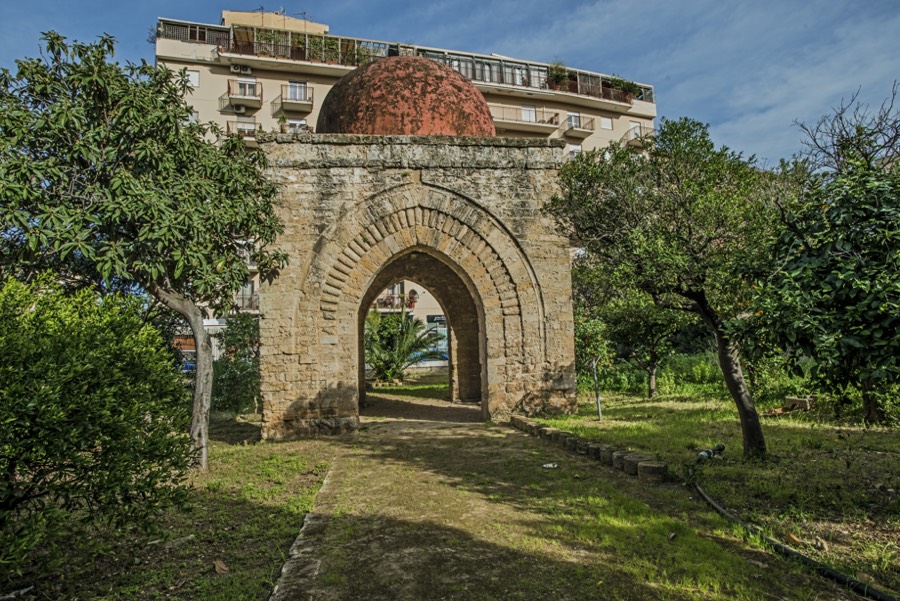 or small cuba, the
Menani
or small cuba, the
Menani
and the
Scibene
. Other towers, no longer in existence, completed the palace’s guard circuit: the Red Tower, whose construction is attributed, again, to the first king of Sicily, and the Chirimbi Tower, dating back to the era of
William I
.
Inside the palace, the mint, the textile and goldsmith workshops and factories were maintained. These included the
tiraz
, a veritable workshop, open to different cultural and artistic styles, where textiles, carpets and works of fine jewellery were made, such as the
crown of Constance
,
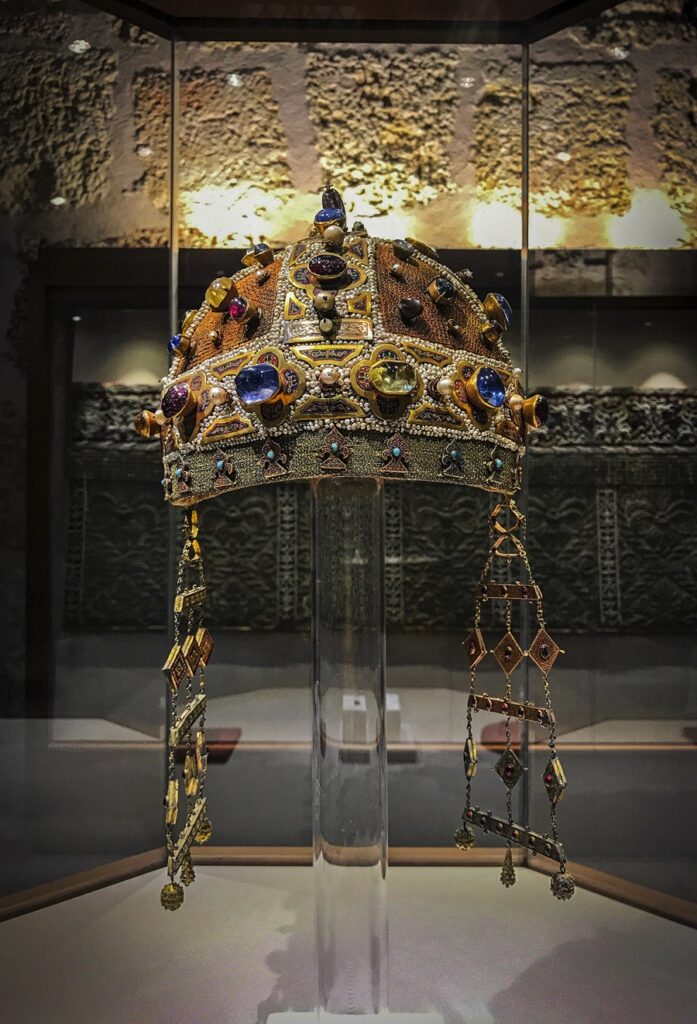 found in the tomb of the wife of
Frederick II
found in the tomb of the wife of
Frederick II
,
Constance of Aragon
, and now kept in the Cathedral Treasury. The history of the palace is linked to temporal power. In fact, in 1556 it was the residence of the Spanish Viceroys and, even today, as if by symbolic continuity, it is the seat of the ARS, the Sicilian Regional Assembly.
